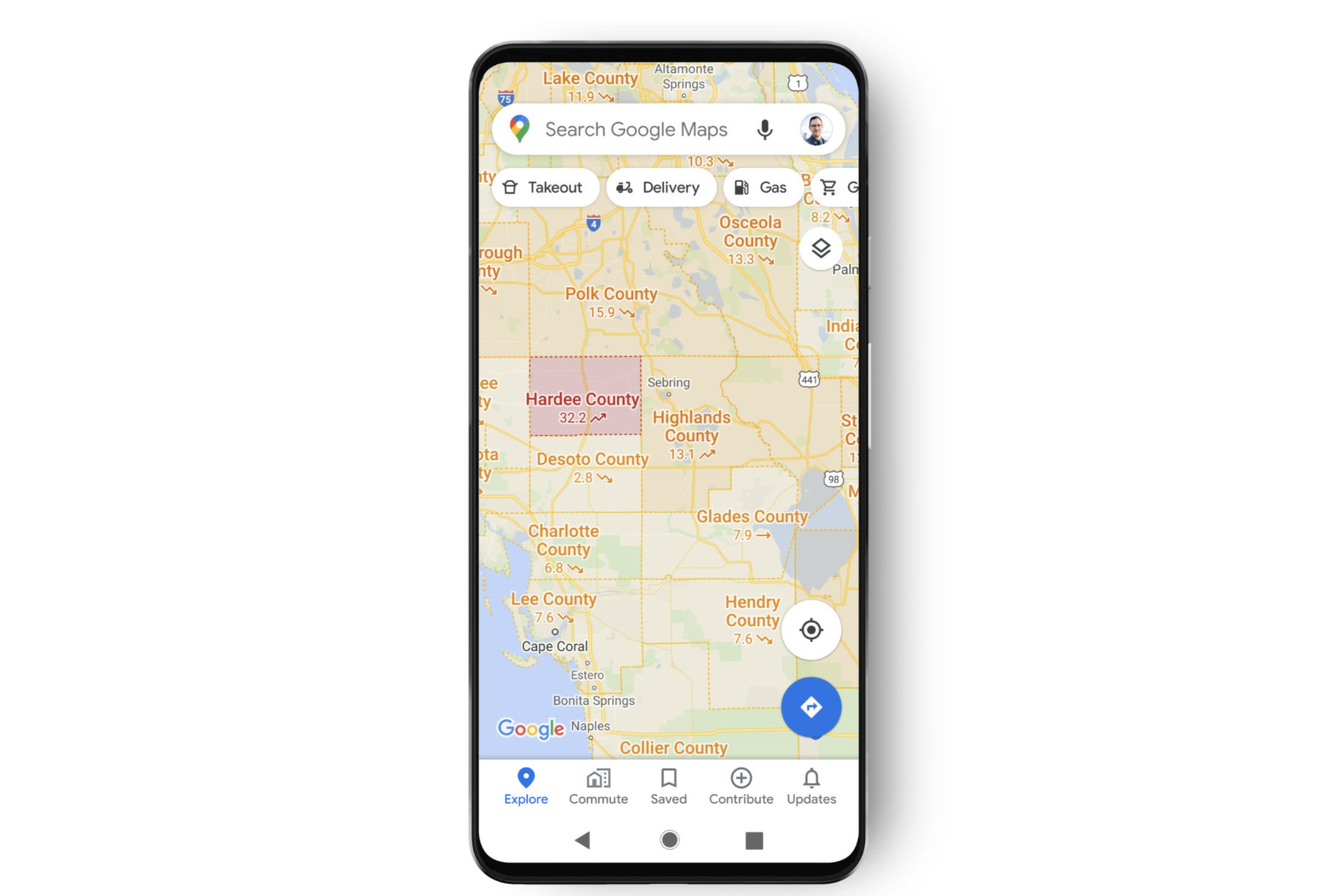Google Maps now shows you where covid-19 cases are spiking

The news: Google Maps has added a new feature that lets people see the number of covid-19 cases per 100,000 people for any given area, with a label indicating if cases are trending up or down. In a blog post, Google said the functionality will start rolling out worldwide on both Android and iOS this week. In the US the information goes down to the state and county level, but in Europe just the national figure is available for now, so the feature will be of very limited use.
How it works: You open Google Maps, click on the top right-hand corner of your screen, and click on “covid-19 info,” Google Maps product manager Sujoy Banerjee explains in the blog post. Color-coding makes it easy to see at a glance how many new cases each area is reporting.
Where’s the data from? Google says the data comes from “multiple authoritative sources,” including Johns Hopkins, the World Health Organization, health agencies, hospitals, the New York Times, and Wikipedia.
The purpose: A crucial part of coping in this pandemic has been assessing risk. The idea is that this new feature should make it easier for people to decide where it’s safe to go and assess the safety of different activities, like sending kids to school or going on vacation.
Keep Reading
Most Popular
Large language models can do jaw-dropping things. But nobody knows exactly why.
And that's a problem. Figuring it out is one of the biggest scientific puzzles of our time and a crucial step towards controlling more powerful future models.
How scientists traced a mysterious covid case back to six toilets
When wastewater surveillance turns into a hunt for a single infected individual, the ethics get tricky.
The problem with plug-in hybrids? Their drivers.
Plug-in hybrids are often sold as a transition to EVs, but new data from Europe shows we’re still underestimating the emissions they produce.
Stay connected
Get the latest updates from
MIT Technology Review
Discover special offers, top stories, upcoming events, and more.